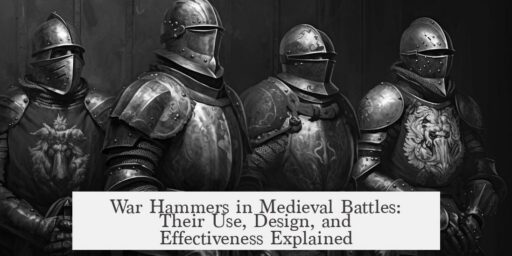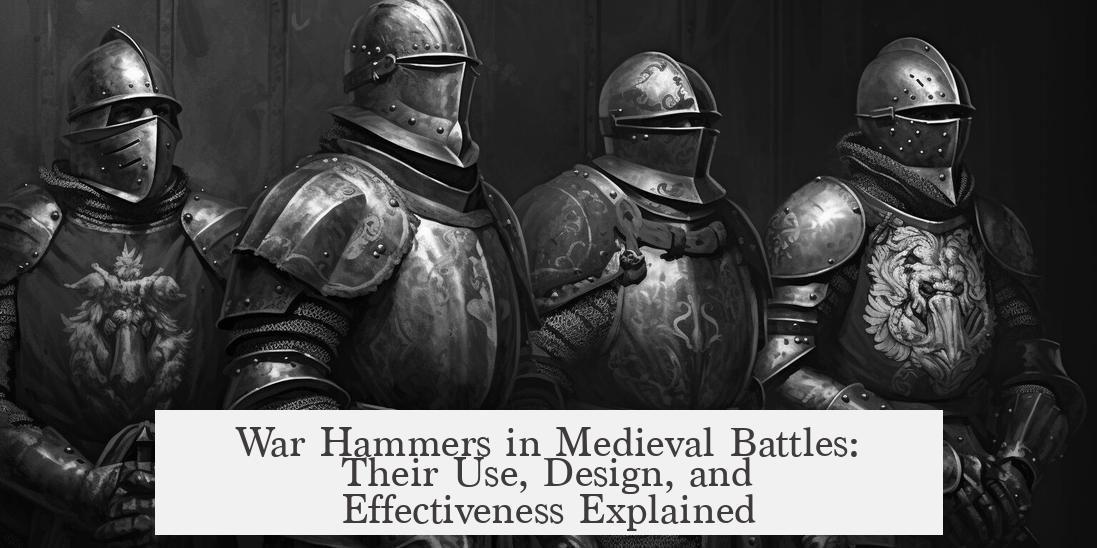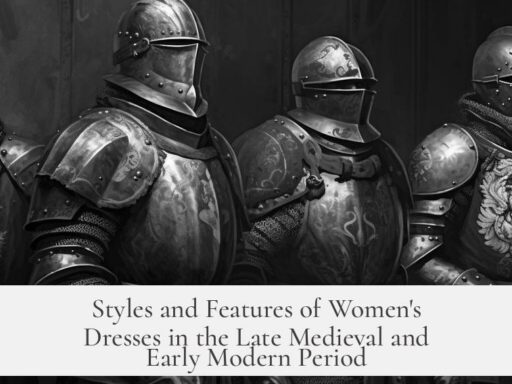War hammers were indeed used in medieval battles, particularly by knights to combat armored opponents, due to their effectiveness against plate armor and chainmail. They functioned primarily to crush or pierce armor, disrupting an enemy’s defense more efficiently than bladed weapons. However, their size and shape differed significantly from the oversized versions depicted in fantasy media.
War hammers served as practical weapons on the battlefield. They were designed to deal with the challenges that armor posed. The blunt or pointed heads targeted armor plates or the joints connecting them. A pointed end could pierce or deform plate armor, while the broader head crushed and dented armor, reducing an opponent’s mobility. This combination improved the attacker’s chances of delivering a disabling blow.
Behind this functionality was the need to overcome plate armor, which was difficult to pierce with swords or axes. Crushing armor joints, such as shoulder plates or elbow guards, could stop the opponent from using limbs effectively, creating openings for further attacks. Against chainmail, direct penetration was unnecessary; the hammer’s impact alone could injure the flesh beneath.
The design of war hammers was practical:
- They were relatively light, with heads similar in size to a ball-peen hammer rather than huge mallet-like shapes.
- Typical weighted heads approximated a 2-pound maul rather than a massive, slow-swinging sledgehammer.
- One side featured a pointed or beak-like projection, while the opposite side was flat or blunt for crushing.
This geometry made them versatile in battle. A single weapon could crush, dent, or stab depending on how the wielder struck.
Despite their practical design, large war hammers common in fantasy depictions are not historically accurate. Fiction often portrays enormous, slow-to-swing war hammers that resemble medieval sledgehammers on steroids. These are impractical in combat and difficult to use effectively due to their weight and unwieldy handling. Experienced fighters avoid such weapons because their slow swings leave openings for faster opponents, making them risky to wield.
Smaller, more manageable war hammers aligned with real medieval battlefield conditions. While large two-handed mauls existed, their use was mostly improvised or situational. For example, during the Battle of Agincourt, English archers used heavy wooden mauls to plant stakes and, when engaged in close combat, wielded these makeshift weapons as blunt instruments.
The medieval battlefield saw a variety of blunt weapons. Swords were even sometimes used as hammers by gripping the blade and bashing with the hilt guard, especially against heavily armored foes where cutting was ineffective. This demonstrates adaptability in combat tactics when penetrating armor was essential.
Historical context also influenced weapon choice. Some weapons like maces, flails, and hammers gained popularity partly due to religious restrictions on spilling blood on certain days. Blunt weapons incapacitated opponents by breaking bones without causing open wounds, navigating church-imposed prohibitions on bloodshed during battles or tournaments held on Sundays.
Scottish warriors are documented as using large hammers as thrown weapons or artillery in battle, a practice somewhat different from the typical hammer wielding but still within historical use. This form of artillery has modern echoes in events like the hammer throw athletic competition.
Interestingly, the nickname of Charles Martel—”Martel” meaning “the hammer”—relates to martial prowess symbolized by the hammer, though the literal use of a war hammer in battle by him is subject to debate.
| Aspect | Medieval War Hammer | Fantasy Depiction |
|---|---|---|
| Size | Modest; similar to ball-peen hammers (approx. 2 lbs) | Excessive; huge heads and heavy weight |
| Use | Targeted armor joints and plates, easy to swing | Slow swings, less practical for real combat |
| Design | One pointed end and one blunt end for crushing | Mostly large blunt heads, unrealistic shapes |
Real war hammers were balanced for function, providing knights and soldiers with an effective weapon to overcome armored enemies efficiently. Their use was widespread among heavy cavalry and infantry alike, especially where armor dominance made slashing weapons less efficient.
In summary:
- War hammers were historically used and effective against armored opponents.
- They were smaller and lighter than fantasy depictions, featuring pointed and blunt heads.
- Their design focused on crushing or piercing armor and disabling limb movement.
- Large, heavy war hammers are mostly a product of fantasy and impractical in combat.
- Blunt weapons fit religious contexts by incapacitating without necessarily shedding blood.
- Improvised use of heavy mauls occurred, especially among non-traditional combatants.
Were War Hammers Actually Used in Medieval Battles?
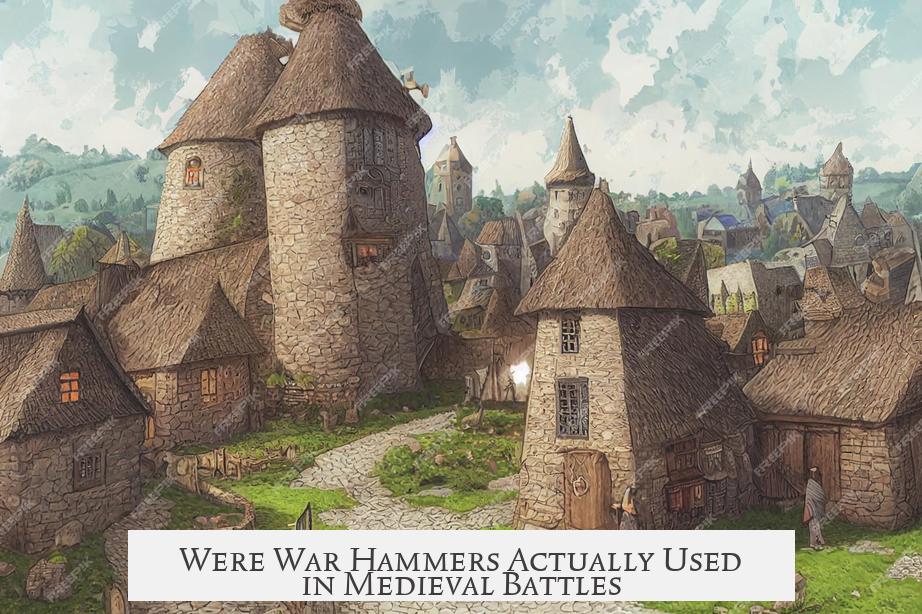
Short answer: Yes, war hammers were not just battlefield props from a fantasy novel, but real, effective weapons used primarily by heavily armored knights. They excelled at breaking through plate armor and disabling opponents. Let’s dig into why these handheld blunt instruments had a real place in medieval warfare—and why the colossal hammers you see in movies are more myth than reality.
The image of knights clanging about with giant war hammers bigger than their own heads has become a staple of fantasy games and movies. However, actual medieval war hammers were much smaller and more practical than these mythical giants. Think more along the lines of a sturdy 2-pound maul or a ball-peen hammer than Thor’s lightning rod. These weapons were easy to wield and deadly in the right hands.
Why War Hammers Were Effective On The Battlefield
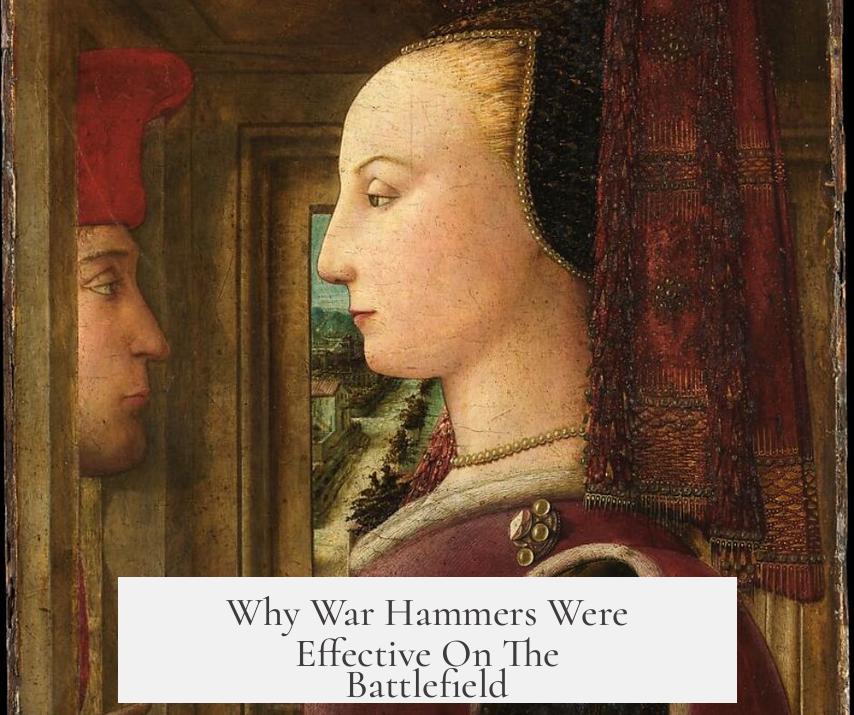
War hammers shone in one key aspect: defeating armor. As medieval combat evolved, battlefield opponents started wearing heavier plate armor. Traditional swords and axes sometimes struggled to deliver effective damage against these metal shells.
Enter the war hammer. Designed specifically to:
- Pierce plate armor with a pointed head — a pointy end could concentrate the force of a blow, potentially puncturing or denting the metal.
- Crush armor joints with a broad, flat side — harder hits on shoulder plates or elbow joints could reduce an opponent’s mobility, making them vulnerable to follow-up strikes.
The trick with war hammers was less about slicing and more about smashing and deforming armor until it failed to protect its wearer. And when you think about it, delivering a bone-breaking whack that bends metal is far more effective than trying to slice through thick steel.
Another little known fact: they were especially effective against ringmail. You didn’t need to puncture it; delivering a crushing blow would injure the flesh beneath anyway. So in terms of battlefield utility, war hammers earned their reputation honestly.
Were War Hammers Used Mostly By Knights?

Yes. These weapons were common in heavy cavalry combat, where knights faced off in armor-clad melees. War hammers allowed them to fight on an even playing field. Instead of trying to slice through fellow armored knights, delivering crushing blows to vulnerable armor joints became the new game plan.
Interestingly, the Scottish used it a bit differently—they hurled large hammers as ranged artillery during battle. This practice inspired the modern hammer throw event you might recognize from track and field today. So if you ever wondered about the medieval origins of that sport, now you know!
Size and Design: Not Your Fantasy Hammer

Let’s clear the smoke on size and weight. War hammers weren’t these giant heavy objects you swing like a sledgehammer at a rock. Their heads were often small—about the size of a tool hammer’s head, making them easy to swing and control. No clumsy Mjolnir here.
The design usually included:
- A pointed bit to pierce plate.
- A broad crushing surface to deliver smashing blows.
- Sometimes a “beak” or spike for additional tactical function, such as hooking or puncturing.
This multifunctional head combined crushing and piercing damage in a compact, nimble weapon.
Fantasy vs. Reality: Why Size Matters
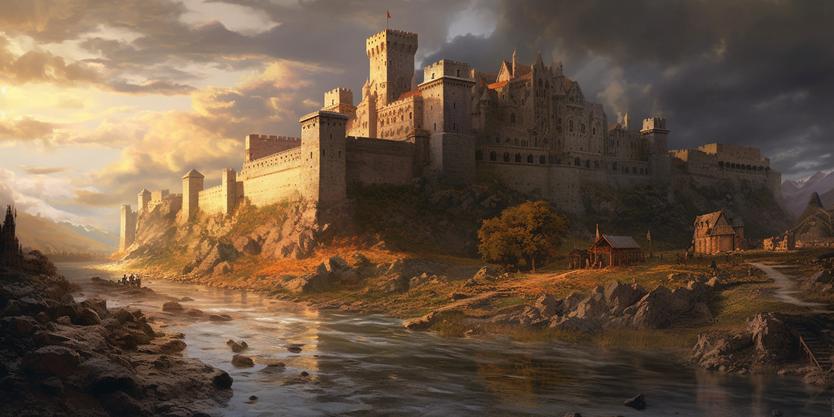
Here’s a nugget of truth—those enormous fantasy hammers seen in video games and movies are mostly nonsense in real combat.
The problem? They are too heavy and slow. A swing takes too long and leaves you exposed. Anyone clever enough would just step aside. This is why people who test these giant hammers in Live Action Role Play (LARP) often find themselves losing fights quickly.
In real combat, speed and control matter more than raw destructive power. Smaller, balanced war hammers offered a practical balance between damage and agility.
Other Interesting Uses and Tidbits

Not every hammer on the battlefield was a purpose-built war hammer. Sometimes, soldiers improvised.
- At the Battle of Agincourt, English archers used large mauls to plant defensive stakes. When trapped in close combat, they swung these heavy tools as weapons.
- Swords were sometimes used as hammers. Warriors grasped the blade and used the pommel and guard to strike hard, circumventing the limited cutting utility of swords against full plate.
- Charles Martel, the famous Frankish leader, earned the nickname “The Hammer.” Some say this was because he wielded a war hammer rather than a sword. Talk about a striking moniker!
- Medieval church restrictions on bloodshed on Sundays encouraged the use of blunt weapons like maces and hammers. These weapons caused damage by crushing bones rather than spilling blood, cleverly skirting the rules of holy days.
So, Were War Hammers Really Used in Medieval Battles?
Absolutely yes. Historical evidence and battle tactics prove their effectiveness against armored foes. They were practical, nimble, and deadly tools specifically designed to counter the defensive advantages of plate armor.
While fantasy hammers capture our imagination, the real war hammer was a modest, versatile weapon wielded by knights and warriors who understood the brutal realities of armored combat.
Next time you watch a medieval flick or play a fantasy game, remember: those massive hammers are fun but fiction. The real war hammers were smart, efficient, and probably saved lots of lives by smashing bones instead of just looking cool on a poster.
Now, if you were a knight facing off in full armor, would you rather wield a giant fantasy boulder or a sleek war hammer designed to break your opponent’s mobility? The choice seems pretty clear.
Were war hammers commonly used by knights in medieval battles?
Yes, war hammers were commonly used by knights, especially against other armored knights. They were effective at damaging or deforming plate armor during close combat.
How were war hammers designed to defeat armor?
War hammers usually had one pointed end to pierce armor and a broad end to crush joints. This design helped disable opponents’ movement by denting their armor.
Were medieval war hammers as large and heavy as those shown in fantasy?
No, medieval war hammers were smaller and lighter than fantasy versions. They were often about the size of a common tool hammer and easy to swing in battle.
Did medieval warriors use any other blunt weapons besides war hammers?
Yes, swords were sometimes used as hammers by holding the blade and bashing with the guard. Also, improvised weapons like mauls were used when needed, as in the Battle of Agincourt.
Why were blunt weapons like war hammers favored despite the church’s stance on bloodshed?
The pope banned bloodshed on Sundays, so weapons like maces and hammers that crushed bones without shedding blood exploited a loophole and remained popular.
